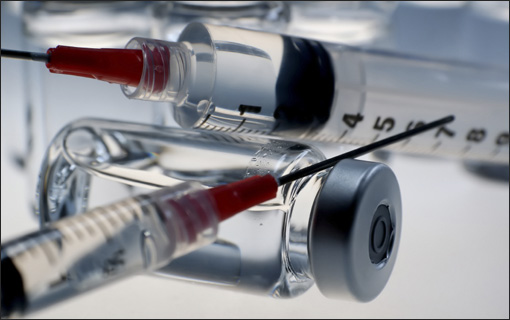Response to estrogen and progestin receptors
 Most of the anabolic steroid not only dock to the androgen receptor, but also to the receptors for estradiol and progesterone. Knowledge about that is also relevant to steroids users, because the progestogenic and estrogenic effect of steroids tells us something about their possible side effects. In 2009 some Dutch researchers published a survey which might benefit health conscious steroids users.
Most of the anabolic steroid not only dock to the androgen receptor, but also to the receptors for estradiol and progesterone. Knowledge about that is also relevant to steroids users, because the progestogenic and estrogenic effect of steroids tells us something about their possible side effects. In 2009 some Dutch researchers published a survey which might benefit health conscious steroids users.
The more you know about anabolic steroids, they more complex they seem to be. If you start to study the chemistry of anabolic steroids you start to understand how various modifications are meant to prevent the conversion of steroids into estradiol-like and DHT-like hormones, while at the same time allowing for an increased anabolic effect. But if you understand that, you'll discover that it all works just a bit more complicated.
Take nandrolone. Nandrolone differs from testosterone because nandrolone lacks a 19-methyl group. Thereby the aromatase enzyme converts nandrolone harder than testosterone into estradiol. At the same time that the omission of 19-methyl group ensures that the anabolic effect of nandrolone is stronger than that of testosterone.
The absence of the 19-methyl group allows nandrolone to attach to the androgen receptor about two times better than testosterone. Because, by the omission of the 19-methyl group of nandrolone it can no longer convert in the androgen testosterone metabolite DHT, at the same time nandrolone has less androgenic side effects than testosterone. Testosterone converts easily into DHT, DHT is hardly anabolic but strongly androgenic, and DHT can attach to the androgen receptor 3 times better than testosterone.
In the eighties, however, users found that nandrolone still has side effects caused by female hormones. At somewhat higher doses, men can develop breasts (gyno) from nandrolone,. This is probably because nandrolone can attach itself to the estradiol receptor. By the absence of the 19-methyl group Nandrolone is also a bit of an estrogen.
It also became clear that nandrolone in somewhat higher doses suppressed the body's endogenous production of testosterone to a greater extent than synthetic testosterone. That is because nandrolone by the absence of the 19-methyl group is also suitable for the progesterone receptor. The combined androgen-estrogen-progestational effect of nandrolone, causes the steroid in the hypothalamus to press to all the buttons that reduce the body's own testosterone production. By the same mechanism nandrolone users can become temporarily impotent, and nandrolone was in animal studies more harmful for the heart and blood vessels than testosterone.
The story becomes even more complex. In the 21st century it became clear that steroid receptors in cells - and hence in muscle cells – worked together. The signal that the androgen receptor, after forming a complex with an anabolic steroid, that tells the muscle to become bigger, becomes stronger if the cell at the same time receives stimuli via the estradiol and progesterone receptor. That idea was the starting point of the thesis of Barry Blankvoort. [Development of an endogenous androgen receptor-mediated luciferase expression assay for interactive androgenic action, Wageningen 2003] If you've read it you look differently to cycles and stacks, and take all those messages about endocrine disruptors in our food a lot more serious. Ergo: the same mechanism by which nandrolone exerts so many side effects, also makes nandrolone such effective muscle builder.
As for the lack of the 19-methyl group in nandrolone, applies to any modification that chemists have devised. Each modification has a range of consequences for the functioning and side effects of anabolic steroids. So there is no perfect anabolic steroid. There is at most an anabolic that individual for any given induvidual has an optimal ratio between desired effect and side effects.
If you are willing to take the risks, then you will have to discover this steroid yourself. Knowledge about how steroids work can help. As the chart below, which was created by researchers at the Amsterdam BioDetection Systems during a job for the WADA doping authority.
The figures below tell you how good few dozen steroids can attach to the androgen receptor [AR], the receptors for estradiol [ERa and ERB], the progesterone receptor [PR] and the glucocorticoid receptor [GR]. Red stands for strong interaction, purple for a somewhat lesser interaction, blue for a limited interaction and black for the lack of interaction.


The researchers determined the activity of the steroids with genetically modified cells, which light up if their receptors are stimulated. However, the researchers used cells that, where not very distinctive. The small cells sometimes act strange.
They sound the alarm a couple of times with an anabolic steroid that you can take in grams, without anything happening, and they do sometimes like nothing is going on while their receptors are stimulated by a killer-androgen. You should see the bright colors so as coarse indications and no more. But knowing that, you can you deduce some interesting things.
1. If norclostebol ever hits the market, be wary of estrogenic side effects.
2. Methandriol does almost nothing with the androgen receptor. It is the least effective ligand for the receptor that the researchers measured.. Mibolerone was also the most effective.
3. Halotestin is unexpectedly easy to attach to the progesterone receptor and does something with the glucocorticoid receptor.
4. MENT or trestolone is now on the market. Underground labs sell the stuff. If you use it, be careful for its strong estrogenic side effects.
Source:
Anal Chim Acta. 2009 Apr 1; 637 (1-2) :247-58.
- Login to post comments


